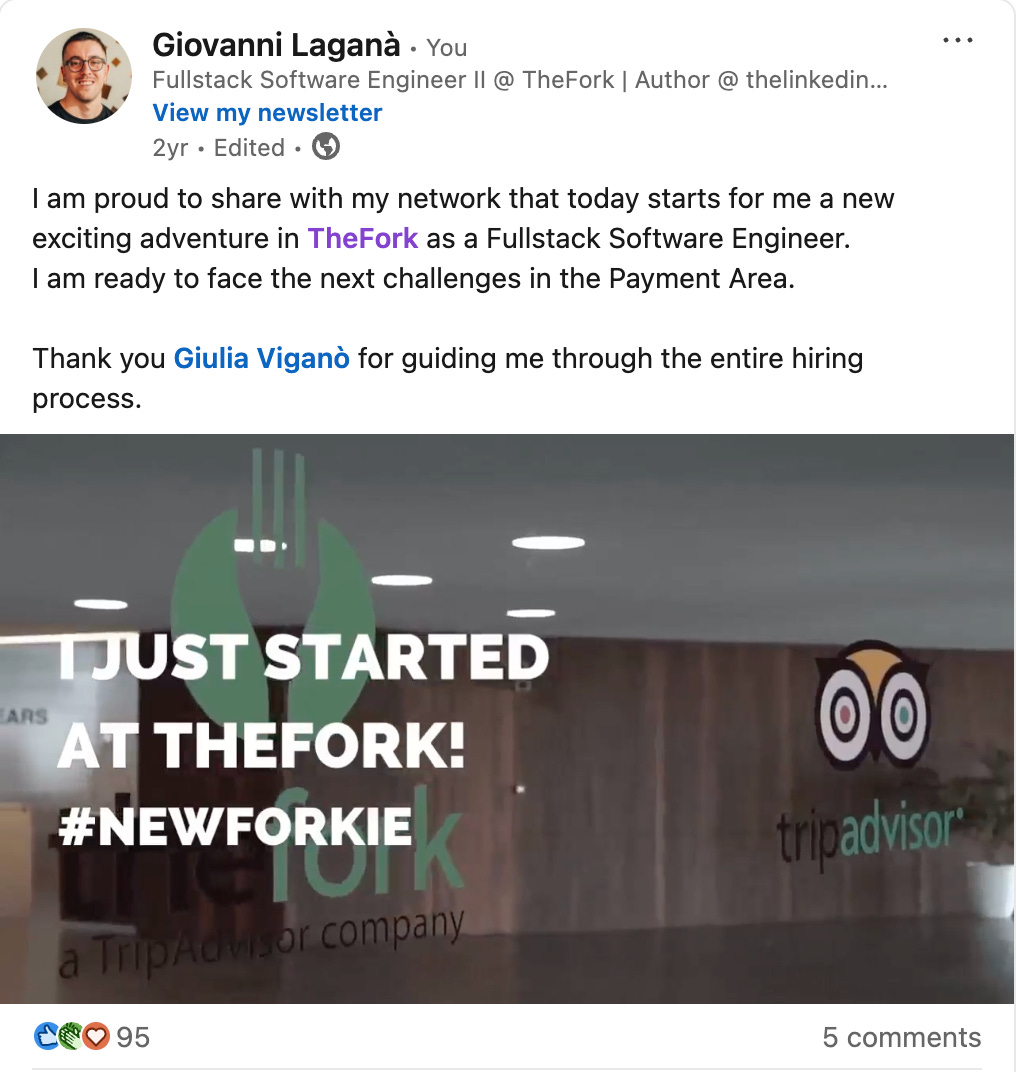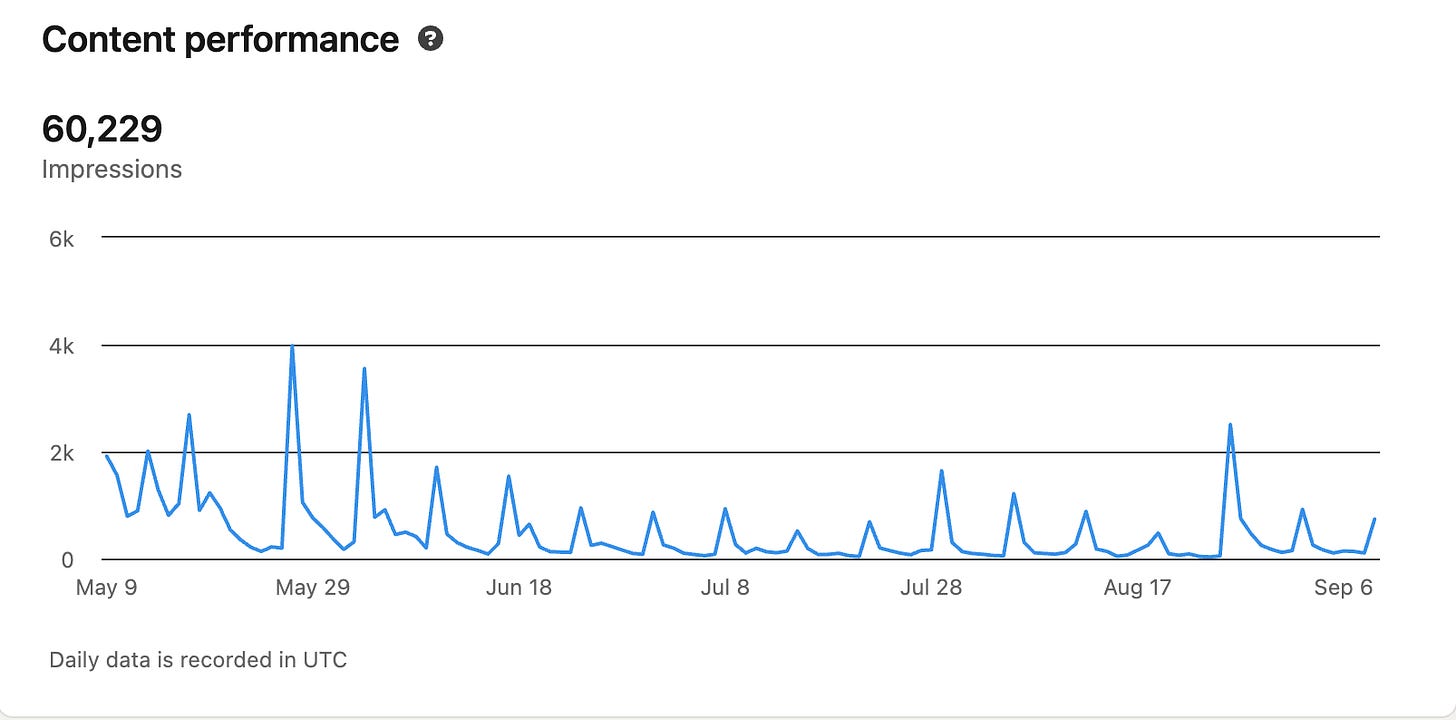4 steps to become a LinkedIn writer ✍🏻
Content creation is easier than you think
In the last article, I shared why writing on LinkedIn can be a game-changer for your career.
If you missed it, you can read it here:
But let’s be honest—starting to write doesn’t happen overnight.
That’s why I want to guide you through the process step by step.
Here’s a gradual path you can follow: 4 simple stages that will take you from LinkedIn reader to LinkedIn writer 🚀
Step 1: Write about work updates
Start with the easiest wins. Write about what happens at work:
You changed company
You got promoted
You attended a workshop or event
Your team achieved a goal
These posts are easy to write and usually generate good engagement, especially from colleagues and people in your network who relate to those experiences.
You’ll start finding your tone, and you’ll gain confidence.
💡 Goal: Break the ice and build your posting habit.
Step 2: Write about updates outside of work
After a few posts, you might realize something: you’ve only been writing about what happens inside your company.
And you start feeling like… your company’s ambassador.
You know what?
That’s a great thing.
When you share internal updates — workshops, milestones, events — you’re giving your company positive visibility.
Sometimes, companies notice this. If what you’re posting is valuable and well-received, they may even encourage or support you to keep doing it.
But here’s the shift: at some point, it’s also fair that you reclaim the spotlight.
This is where the first major change happens: you stop posting only about your work, and begin posting about yourself.
You start sharing professional updates that aren’t directly tied to your company:
Attending a meetup
Participating in a conference
Joining a hackathon
Working on a personal side project
It’s no longer just about your job. It’s about you.
What you’re building is a personal narrative — a space where you share your own professional evolution, one post at a time.
And this unlocks a powerful new habit: extracting takeaways from the things you do.
You stop moving through experiences passively and start seeing them as opportunities to learn, reflect, and grow — and then share.
💡 Goal: make yourself the main character of your content.
Step 3: Set a regular frequency
So far, your posts have probably followed an irregular rhythm — sometimes weeks go by without writing, then suddenly you feel inspired and post again.
That’s perfectly fine at the beginning.
But if you want to grow as a writer, the real turning point is consistency.
It’s time to commit to a regular posting schedule — and it doesn’t have to be intense. Start with just one post per month.
At first glance, one post per month might feel like too little. But here’s the truth:
👉🏻 It’s not about speed. It’s about sustainability.
Many people start with high ambitions — they aim for one or two posts per week — and within a few weeks they hit a wall:
They run out of inspiration, their ideas feel forced, and they burn out.
Why? Because they didn’t think long-term.
Starting with a low, manageable frequency helps you:
Build a long-lasting habit without pressure
Let ideas mature over time
Avoid the trap of thinking you have to say something even when you don’t
Maintain high-quality writing while you develop your voice
This step also changes your mindset.
You begin to plan in advance, drafting your ideas early, refining them, and sticking to your schedule.
You shift from a reactive approach (waiting for something to happen so you can write) to a proactive one — you create something worth talking about.
💡 Goal: Think like a long-distance runner. Don’t sprint. Build your writing muscle with consistency and intention.
Step 4: Build your editorial calendar
Reaching this stage means you’ve made real progress.
You’ve overcome the fear of putting yourself out there.
You’ve found your voice.
And now, you publish consistently.
What’s next?
Becoming intentional.
This is where you stop posting randomly and start thinking like a content creator.
That means having a clear direction and a structured plan for the topics you’ll write about.
You’re no longer just writing when something happens — you’re writing because you have a vision.
Now your posts are guided by questions like:
What value do I want to bring to my audience?
What message do I want to reinforce over time?
How do my posts connect to my professional goals?
To do that, you’ll need to:
Map out your themes (e.g. career growth, side projects, reflections, advice)
Space them over time — perhaps by week or by month
Analyze what performs well
Continuously refine your voice, format, and delivery
This is the step where you take full ownership of your content.
You’re no longer just a writer — you become a communicator, a brand, a creator.
💡 Goal: align your writing with a long-term purpose. Let your posts reflect not only who you are, but who you’re becoming.
Want to build your own editorial calendar but not sure how?
In the next post, I’ll share the exact framework I’ve developed after years of experimenting.
Subscribe to get it straight in your inbox, next week! 👇🏻






